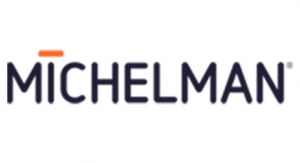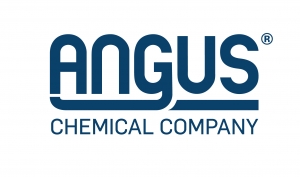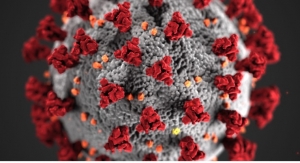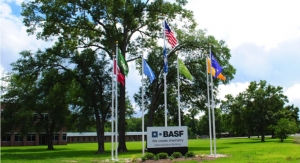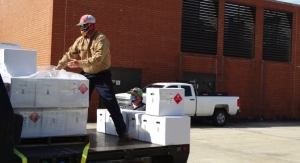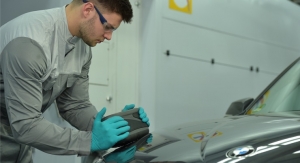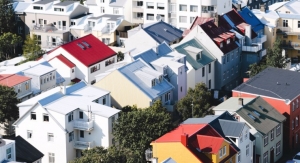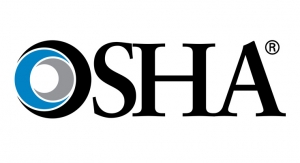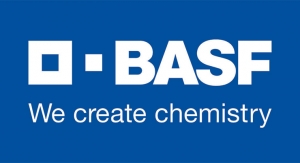Sean Milmo, European Correspondent05.13.20
Europe’s coatings, producers and their suppliers, like many other manufacturing sectors, are hoping that the region’s economy will quickly rebound from the devastating impact of the novel coronavirus (COVID-19) pandemic.
Most of Europe is being expected to plunge into a deep recession starting in the second quarter of the year. GDP in the UK, for example, is being forecast to plummet by around one-third between April and June.
Analysts are anticipating that there will be then a rapid revival in demand later in the year through to 2021.
The International Monetary Fund (IMF) forecast in April that the annual GDPs of Europe’s region’s leading economies would drop this year by an average of seven to eight percent and then jump to average growth of four to five percent in 2021.
Coatings producers are hoping that later this year and in early-to-mid 2021 they will have started to make up the lost ground in certain growing market segments.
One of these is powder coatings in which before the COVID outbreak global demand was estimated to be increasing at an average five to six percent annually.
The increase has been lower in Europe but still above the average growth for the whole coatings market in the region.
AkzoNobel reported last year that powder coatings were among its businesses which ‘’performed extremely well.”
Chief Operating Officer Ruud Joosten said that the business “continued to strengthen its position as a market leader, driven by a number of innovative new products.”
Powder coatings are seen as having comparatively bright prospects in the post-COVID-19 period, presuming that the disease does not reoccur at high infection levels.
Over the last few years, demand has been rising across a wide range of sectors. The main markets for powder coatings have been construction, automotive and transport, machinery and furniture.
They are also regarded as having the potential, particularly through innovation, to make inroads into new markets.
The strength of powder coatings has been their low emissions of volatile organic compounds because they require no solvents, low waste, ease of process and applicability to many substrates.
In the recovery period after COVID, powder coatings are likely to be able to meet the predominant social and economic needs, such as sustainability, safety, low energy consumption and use in low-cost projects in areas like commercial and residential construction.
At the same time, the restructuring of sectors in which powder coatings have been playing a key role is likely to continue. In some segments, for example, there has been an integration of activities, so that a single business operation deals with design, all aspects of manufacturing, including the application of powder coatings, and installation with a high level of support services.
The strategy of many multinational powder coatings producers is to broaden their activities beyond the manufacturing of the powder coatings to the important area of pre-treatment and surface preparation products, while at the same time ensuring they are environmentally compliant.
AkzoNobel powder coatings business launched in October last year a range of primers which included a high performing powder coatings primer for corrosion protection over blasted steel and a protective three-layer primer system for highly corrosive environments.
“Selecting the right primer for the right level of corrosion can be a lot more complex than people may think,” said Daniela Vlad, managing director of AkzoNobel powder coatings.
Henkel and Chemetall, BASF Coatings’ surface treatment business, and other pre-treatment suppliers have moved with the trend for more sustainability by introducing environmentally safer products such as those based on zirconium as an alternative to chromium- and phosphate-based formulations
Despite a 4.3 percent rise in powder coatings sales last year, Jotun, the Norwegian coatings multinational with operations in Europe, Middle East and Asia, told investors that the growth did not meet the company’s expectations.
So it has reinforced a policy aimed at differentiating itself more sharply from its competitors with measures like strengthening its services to create a closer relationship with customers so that it can form long-term partnerships with key international customers.
One of its initiatives has been to create “client teams” which include sales, technical support and laboratory personnel. Their task is to find out about the specific demands of individual companies. Then these customer preferences are communicated to Jotun’s international network of R&D laboratories so that its scientists and technical staff are more closely involved in meeting customers’ needs.
Tiger Coatings of Austria is now a supplier to multiple sectors, including agricultural machinery, automotive, electronic and IT appliances, architecture, glass, cans and tubes, retail equipment, steel structures and sports and leisure.
The company, a thermoset-polymers specialist which was one of the first European producers of powder coatings in the late 1960s, even runs a consultancy covering quality assurance, logistics, management systems and lab services.
Tiger is also active in the growing powder coatings segment of wood products, particularly furniture. The company was one of the pioneers in Europe of the application of powder coatings on engineered wood, such as medium density fiberboard (MDF).
The use of powder coatings on wood and other temperature-sensitive substrates such as plastics has been made possible by advances in resin technologies which enables low-temperature curing.
The resins and functional materials business of DSM last year introduced a powder coatings resin which cures quicker and at lower temperatures to help wood applications and lower energy consumption.
The development of new pre-treatment technologies such as those based on zirconium or titanium has also aided low-temperature powder coating applications.
Switzerland’s IGP Pulvertechnik markets a range of powder coatings for wood furniture, particularly for medium density fibreboard (MDF) which has been increasing its share of the European furniture market. The company claims that its costs per unit of its powder wood coatings are around 20 percent lower for hybrid coatings and 37 percent for traditional varnish coatings.
IGP also provides a primer for its MDF powder coating which ensures good adherence and prevents warp or swell.
Low-temperature curing is an indication of the broadening range of applications of powder coatings which should help it withstand the financial pressures of the post-COVID-19 period.
Most of Europe is being expected to plunge into a deep recession starting in the second quarter of the year. GDP in the UK, for example, is being forecast to plummet by around one-third between April and June.
Analysts are anticipating that there will be then a rapid revival in demand later in the year through to 2021.
The International Monetary Fund (IMF) forecast in April that the annual GDPs of Europe’s region’s leading economies would drop this year by an average of seven to eight percent and then jump to average growth of four to five percent in 2021.
Coatings producers are hoping that later this year and in early-to-mid 2021 they will have started to make up the lost ground in certain growing market segments.
One of these is powder coatings in which before the COVID outbreak global demand was estimated to be increasing at an average five to six percent annually.
The increase has been lower in Europe but still above the average growth for the whole coatings market in the region.
AkzoNobel reported last year that powder coatings were among its businesses which ‘’performed extremely well.”
Chief Operating Officer Ruud Joosten said that the business “continued to strengthen its position as a market leader, driven by a number of innovative new products.”
Powder coatings are seen as having comparatively bright prospects in the post-COVID-19 period, presuming that the disease does not reoccur at high infection levels.
Over the last few years, demand has been rising across a wide range of sectors. The main markets for powder coatings have been construction, automotive and transport, machinery and furniture.
They are also regarded as having the potential, particularly through innovation, to make inroads into new markets.
The strength of powder coatings has been their low emissions of volatile organic compounds because they require no solvents, low waste, ease of process and applicability to many substrates.
In the recovery period after COVID, powder coatings are likely to be able to meet the predominant social and economic needs, such as sustainability, safety, low energy consumption and use in low-cost projects in areas like commercial and residential construction.
At the same time, the restructuring of sectors in which powder coatings have been playing a key role is likely to continue. In some segments, for example, there has been an integration of activities, so that a single business operation deals with design, all aspects of manufacturing, including the application of powder coatings, and installation with a high level of support services.
The strategy of many multinational powder coatings producers is to broaden their activities beyond the manufacturing of the powder coatings to the important area of pre-treatment and surface preparation products, while at the same time ensuring they are environmentally compliant.
AkzoNobel powder coatings business launched in October last year a range of primers which included a high performing powder coatings primer for corrosion protection over blasted steel and a protective three-layer primer system for highly corrosive environments.
“Selecting the right primer for the right level of corrosion can be a lot more complex than people may think,” said Daniela Vlad, managing director of AkzoNobel powder coatings.
Henkel and Chemetall, BASF Coatings’ surface treatment business, and other pre-treatment suppliers have moved with the trend for more sustainability by introducing environmentally safer products such as those based on zirconium as an alternative to chromium- and phosphate-based formulations
Despite a 4.3 percent rise in powder coatings sales last year, Jotun, the Norwegian coatings multinational with operations in Europe, Middle East and Asia, told investors that the growth did not meet the company’s expectations.
So it has reinforced a policy aimed at differentiating itself more sharply from its competitors with measures like strengthening its services to create a closer relationship with customers so that it can form long-term partnerships with key international customers.
One of its initiatives has been to create “client teams” which include sales, technical support and laboratory personnel. Their task is to find out about the specific demands of individual companies. Then these customer preferences are communicated to Jotun’s international network of R&D laboratories so that its scientists and technical staff are more closely involved in meeting customers’ needs.
Tiger Coatings of Austria is now a supplier to multiple sectors, including agricultural machinery, automotive, electronic and IT appliances, architecture, glass, cans and tubes, retail equipment, steel structures and sports and leisure.
The company, a thermoset-polymers specialist which was one of the first European producers of powder coatings in the late 1960s, even runs a consultancy covering quality assurance, logistics, management systems and lab services.
Tiger is also active in the growing powder coatings segment of wood products, particularly furniture. The company was one of the pioneers in Europe of the application of powder coatings on engineered wood, such as medium density fiberboard (MDF).
The use of powder coatings on wood and other temperature-sensitive substrates such as plastics has been made possible by advances in resin technologies which enables low-temperature curing.
The resins and functional materials business of DSM last year introduced a powder coatings resin which cures quicker and at lower temperatures to help wood applications and lower energy consumption.
The development of new pre-treatment technologies such as those based on zirconium or titanium has also aided low-temperature powder coating applications.
Switzerland’s IGP Pulvertechnik markets a range of powder coatings for wood furniture, particularly for medium density fibreboard (MDF) which has been increasing its share of the European furniture market. The company claims that its costs per unit of its powder wood coatings are around 20 percent lower for hybrid coatings and 37 percent for traditional varnish coatings.
IGP also provides a primer for its MDF powder coating which ensures good adherence and prevents warp or swell.
Low-temperature curing is an indication of the broadening range of applications of powder coatings which should help it withstand the financial pressures of the post-COVID-19 period.


